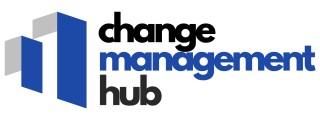
Defining the chain of command in nursing
How authority and hierarchy shape nursing practice
The chain of command in nursing is a structured hierarchy that defines authority, responsibility, and communication pathways within healthcare settings. This system is essential for ensuring safe, effective patient care and smooth operations. At its core, the chain of command clarifies who oversees whom, how decisions are made, and how information flows between different levels of nursing staff.
In most healthcare organizations, the nursing hierarchy starts with entry level positions such as certified nursing assistants and licensed practical nurses. These roles support patient care under the supervision of registered nurses. Registered nurses (RNs), often with a Bachelor of Science in Nursing (BSN) or even a Master of Science in Nursing (MSN), provide direct care and coordinate with other healthcare professionals. Advanced practice registered nurses, including those with a Doctor of Nursing Practice (DNP), take on specialized roles and may oversee teams or specific aspects of care. Charge nurses and nurse managers supervise daily operations, while the chief nursing officer leads the entire nursing department.
This hierarchy is not just about titles. It’s about ensuring that every nurse, from entry level to advanced practice, knows their responsibilities and who to turn to for guidance. The chain of command supports accountability and helps maintain high standards in nursing practice, especially during times of change. For example, when new protocols are introduced, the chain ensures that information and training reach all levels of staff efficiently.
- Authority: Each level in the chain has defined authority, from certified nursing staff to the chief nursing officer.
- Oversight: Supervisors and managers oversee the work of those below them, ensuring quality patient care.
- Education and expertise: Higher levels often require advanced education, such as a master of science in nursing or a practice DNP, reflecting greater responsibility.
Understanding the chain command is fundamental for anyone involved in nursing, whether you are a student, a newly licensed nurse, or an experienced professional. It shapes how change is managed, how communication flows, and how staff are empowered to deliver the best patient care possible. For more on how professional development supports effective change management in nursing, explore this resource on the role of national staff development councils.
The role of the chain of command during organizational change
The influence of hierarchy on change initiatives
In the world of nursing, the chain of command is more than just a formal structure—it is the backbone that supports how changes are introduced and managed within healthcare organizations. The hierarchy, from entry level nursing staff to the chief nursing officer, defines clear lines of authority and responsibility. This structure ensures that every nurse, whether a licensed practical nurse, registered nurse, or someone with a master of science in nursing (MSN), knows their role in the process of change.
When a new practice or policy is introduced, the chain of command helps to distribute information and expectations efficiently. Charge nurses and advanced practice registered nurses often act as intermediaries, translating organizational goals into actionable steps for their teams. This ensures that patient care standards are maintained even as new protocols are adopted. The oversight provided by those higher in the nursing hierarchy, such as nursing officers and certified nursing staff, helps to monitor progress and address challenges as they arise.
Ensuring accountability and consistency
During organizational change, accountability is critical. The chain of command in nursing clarifies who is responsible for implementing specific aspects of change. For example, a registered nurse may be tasked with updating patient care documentation, while a nurse with a doctor of nursing practice (DNP) degree might oversee the integration of evidence-based practices. This division of labor, based on education and level of authority, helps to prevent confusion and ensures consistency across the care team.
- Clear roles: Each level of the nursing staff knows what is expected during transitions.
- Support structure: Nurses can escalate concerns or seek guidance through the established hierarchy.
- Standardization: Patient care remains consistent, even as new systems or technologies are introduced.
Driving effective change through leadership
Leaders within the chain command, such as nursing officers and certified nursing professionals, play a key role in motivating staff and addressing resistance. Their authority and expertise help to foster trust, making it easier for staff to adapt to new ways of working. By leveraging the strengths of the nursing hierarchy, organizations can navigate complex changes while maintaining high standards of care for patients.
For further insights on how to maximize the impact of change initiatives in healthcare, explore this resource on maximizing the impact of enhanced transfer value in change management.
Communication pathways and their impact on change
How Information Flows in the Nursing Hierarchy
In nursing, the chain of command is more than a formal structure—it is the backbone of how information travels during change. Each level of nursing staff, from entry level to advanced practice, plays a role in ensuring that updates, protocols, and feedback move efficiently through the hierarchy. When organizational change occurs, the clarity of these communication pathways can directly impact patient care and staff morale.
- Registered nurses and licensed practical nurses often receive updates from charge nurses or nursing officers, who oversee the implementation of new practices.
- Certified nursing assistants and other support staff depend on clear instructions from their supervising nurses to adjust their daily work.
- At the top, chief nursing officers and those with a master of science in nursing (MSN) or doctor of nursing practice (DNP) degrees are responsible for translating organizational goals into actionable steps for their teams.
Breakdowns in these pathways can lead to confusion, resistance, or even errors in patient care. For example, if a new policy is introduced but not clearly explained at each level, staff may interpret changes differently, affecting consistency in nursing practice. This is why effective communication is a critical skill for all levels of the nursing hierarchy.
Tools and Strategies for Effective Communication
Hospitals and healthcare organizations use a variety of tools to support communication within the chain of command. These include regular staff meetings, digital communication platforms, and detailed documentation. Training programs for registered nurses and advanced practice nurses often emphasize communication skills as part of their education, recognizing that clear information flow is essential for safe and effective patient care.
For those looking to strengthen their understanding of structured communication in healthcare, pursuing configuration management certification can offer valuable insights into managing complex changes and maintaining clarity across teams.
Ultimately, the effectiveness of the chain of command in nursing depends on both the formal hierarchy and the informal relationships that support open dialogue. When communication is prioritized, nurses at every level are better equipped to adapt to change and maintain high standards of care for their patients.
Empowering staff within the chain of command
Promoting Engagement and Accountability in the Nursing Hierarchy
Empowering staff within the chain of command is essential for effective change management in nursing. The nursing hierarchy, from entry level nursing staff to advanced practice registered nurses and chief nursing officers, is designed to ensure patient care is safe and consistent. However, true empowerment goes beyond following orders; it involves fostering a culture where every nurse, whether licensed practical or holding a master of science in nursing (MSN), feels confident to contribute ideas and feedback. Nursing staff are often the first to notice shifts in patient needs or workflow challenges. When the chain of command encourages open dialogue, registered nurses, certified nursing assistants, and charge nurses can raise concerns or suggest improvements without fear of reprisal. This not only boosts morale but also leads to better patient outcomes.- Encouraging Participation: Staff engagement initiatives, such as regular team meetings or feedback sessions, help all levels of nursing practice feel heard. This is especially important during periods of organizational change, when uncertainty can undermine confidence.
- Clear Delegation of Authority: Defining the responsibilities of each role—whether a licensed practical nurse, a registered nurse, or a doctor of nursing practice (DNP)—ensures everyone understands their scope of practice and authority. This clarity supports accountability and reduces confusion during transitions.
- Professional Development: Ongoing education, from certified nursing programs to advanced degrees like a master of science in nursing, equips staff to adapt to new processes and technologies. Investing in education also signals that the organization values its workforce and is committed to their growth.
Common challenges in the chain of command during change management
Barriers That Disrupt the Nursing Chain of Command
During organizational change, the chain of command in nursing can face several obstacles that impact patient care and staff morale. Understanding these challenges is crucial for anyone involved in nursing practice or overseeing change management in healthcare settings.
- Communication Breakdowns: When information does not flow smoothly through the nursing hierarchy, misunderstandings can arise. This can lead to confusion about new protocols or changes in patient care procedures, especially among entry level nursing staff and licensed practical nurses.
- Resistance to Change: Nurses and other staff may feel uncertain or anxious about new initiatives, particularly if they are not involved in the decision-making process. This resistance can slow down the adoption of best practices and affect the quality of care.
- Authority Confusion: In some cases, the roles and responsibilities within the chain command are not clearly defined. For example, registered nurses, charge nurses, and advanced practice nurses may be unsure about who should oversee specific aspects of patient care during transitions.
- Overburdened Leadership: Chief nursing officers, nursing msn holders, and those with a master science in nursing or doctor nursing practice (DNP) degrees often manage multiple priorities. During change, they may struggle to provide adequate support to all levels of nursing staff, from certified nursing assistants to registered nurses.
- Education Gaps: Differences in education and experience, such as between licensed practical nurses and those with a master science in nursing, can create barriers to understanding new processes. This can lead to inconsistent application of changes across the team.
Impact on Patient Care and Staff Engagement
These challenges can directly affect patient outcomes and the work environment. When the nursing chain of command is disrupted, patient care may become fragmented, and staff may feel unsupported. This is especially true if certified nursing staff or those with advanced practice credentials are not empowered to share feedback or propose improvements.
Addressing these issues requires a clear understanding of the nursing hierarchy and a commitment to supporting all levels of staff during change. By fostering open communication and clarifying authority, healthcare organizations can help ensure that changes in practice benefit both patients and nurses.
Best practices for leveraging the chain of command in change management
Strategies for Effective Use of Hierarchy in Change Initiatives
In nursing, the chain of command is more than a formal hierarchy. It is a practical framework that can either support or hinder successful change management. Leveraging this structure effectively is essential for registered nurses, licensed practical nurses, advanced practice nurses, and nursing officers at every level.- Clarify Roles and Responsibilities: Make sure every nurse and staff member understands their position in the nursing hierarchy. When authority and responsibilities are clear, communication about changes in patient care or nursing practice becomes more efficient.
- Promote Open Communication: Encourage feedback from all levels, including entry level nursing staff and charge nurses. This helps identify concerns early and fosters a sense of ownership among those delivering patient care.
- Provide Targeted Education: Offer training tailored to each level, from certified nursing assistants to those with a master of science in nursing (MSN) or doctor of nursing practice (DNP). Education should address both the change itself and the skills needed to adapt within the chain command.
- Empower Leaders at Every Level: Recognize the influence of informal leaders, such as experienced registered nurses or certified nursing staff. Support them in guiding their peers through transitions in practice or policy.
- Monitor and Adjust: Regularly assess how changes are being implemented across the nursing staff. Be ready to adapt strategies based on feedback from licensed practical nurses, advanced practice nurses, and other team members who oversee patient care.
Tools and Techniques for Success
A few practical approaches can help ensure the chain of command supports rather than stalls change:| Technique | Application in Nursing |
|---|---|
| Structured Briefings | Use regular meetings to update staff at all levels, from entry level to chief nursing officer, on progress and expectations. |
| Feedback Loops | Implement systems where nurses and staff can share insights or concerns, ensuring the chain command remains responsive. |
| Mentorship Programs | Pair less experienced nurses with those holding advanced practice or master science nursing credentials to support professional growth during change. |













